In April 2023, Euro NCAP announced the Truck Safe City and Highway rating scheme. This expands Euro NCAP’s traditional focus on passenger cars to include heavy duty trucks and help countries across Europe achieve their “Vision Zero” target of ending traffic-related fatalities. It is anticipated that many other regions will adopt similar heavy-duty truck protocols into their own local laws and begin requiring specific star ratings, as seen in the greater London region’s recent regulations. Similarly, the US will also begin requiring minimum ADAS features on future trucks, such as Automatic Emergency Braking (AEB).
Of particular interest in the Truck Safe rating scheme is ADAS technology. While crashes occur less often with heavy trucks than with other vehicles, these collisions are more likely to result in serious injury or even fatality. By formalizing the safety protocol for heavy trucks and their accompanying ADAS technology, Euro NCAP hopes to encourage wider adoption of these systems and expand their safety benefits beyond passenger cars.
Going forward, heavy truck OEMs will need to simulate, test, and homologate the ADAS technology in their vehicles in order to adapt to these new protocols.
What steps can engineering teams take now to ensure that the vehicles and ADAS features they put on the market meet Euro NCAP protocol? How can companies ensure heavy trucks progress towards best practice safety rather than just meet minimum standards?
In this blog post, we will explore how engineering teams can answer these questions by taking advantage of both virtual and physical test and simulation.
First, what are the new NCAP safety protocols?
The General Safety Regulation (GSR) 2022-2024 currently requires heavy truck OEMS to include the following ADAS technologies:
- Moving Off Information System (MOIS)
- Blind Spot Information System (BSIS)
- Reversing detection
- Emergency stop signal
To achieve a five-star rating, heavy truck ADAS technologies must include the following:
- Lane Departure Warning System ECE-R130 (LDWS)
- Autonomous Emergency Braking System ECE-R131 (AEBS)
- Blind Spot Monitoring ECE-R151 (BSM)
- Moving Off Information System ECE-R159 (MOIS)
Upcoming safety measures will require even more ADAS capabilities.
For city safe:
- In 2027: OSM (Occupant Status Monitoring), Motion Inhibit, and AEB Reverse will be added
- In 2030: AEB turn across vehicle path, passive pedestrian protection, crash compatibility and occupant protection will be added
For Highway safe:
- In 2027: OSM will be added
- In 2030 AEB turn across vehicle path, passive pedestrian protection, crash compatability and occupant protection will be added
How to prepare for upcoming NCAP regulations
Companies need to design, test, and homologate ADAS components in order to meet regulations and achieve the desired safety rating. Combining test and simulation enables engineering organizations to maximize accuracy and efficiency but knowing which tests to perform and which simulation tools to select can be challenging.
Simcenter Engineering and Consulting Services offers a comprehensive solution for companies looking to prepare their heavy truck ADAS components for the upcoming NCAP regulations. We combine the Siemens Xcelerator portfolio with an advanced test track and ADAS testing equipment to help you meet or exceed the upcoming Euro NCAP regulations.
Integrated ADAS development
Simcenter Engineering Services can help improve the safety of ADAS components with a mixed-reality framework. Using this framework, our engineering experts help heavy truck OEMs and their suppliers solve common, yet complex ADAS issues, such as inefficient adaptive cruise control (ACC) in complex traffic conditions, false detections or improper activations in AEB, and inaccurate lane keeping assist (LKA). Our team can assist at every step of the process, from defining suitable requirements and test cases to verification and validation.
The mixed-reality framework allows engineers to identify and analyze issues early on and reduce extensive prototype testing. Using the framework, an evaluation of the full system can be done virtually, even when engineers are working only on part of the system (for example, sensors and perception, control algorithms, etc).
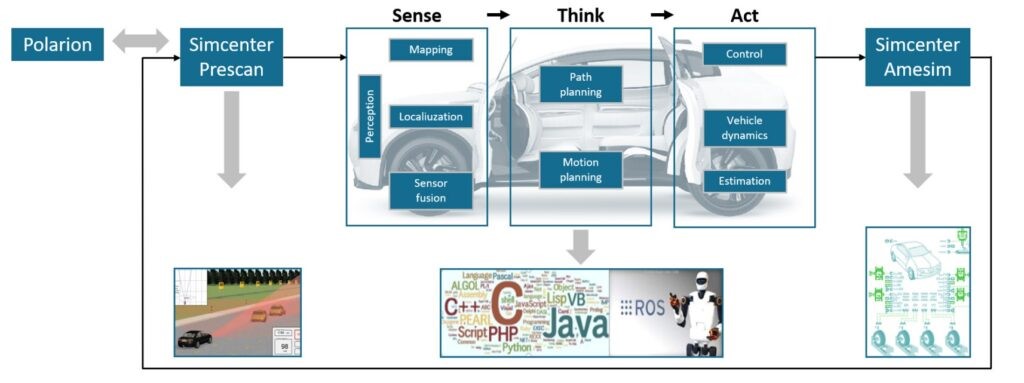
The framework includes a virtual models of the environment, the vehicle, and the sensors. The Simcenter Engineering Services team provides the process, algorithms, and know-how to implement both the digital twin and the software control algorithms necessary to provide the Sense, Think, and Act functions for all SAE ADAS levels. The most critical scenarios are identified up front for targeted testing.
During development, hardware components such as the sensors, electronic control unit (ECU) and eventually the vehicle itself are combined with the virtual ones. A middleware allows the models to interface with the physical systems. The driving scene can be extended with additional virtual elements, such as obstacles, other vehicles and vulnerable road users (VRUs), to test multiple scenarios much faster than with physical testing alone.
The comprehensive digital twin runs in parallel with physical testing maneuvers to deliver more insight, better accuracy, and faster development time. It combines test and simulation to identify issues early and solve them before the physical prototype testing phase.
Scenario generation
In order to comply with upcoming NCAP regulations, engineers developing ADAS components for heavy trucks will need to define development and validation testing conditions. Which scenarios need to be considered? How can engineers deal with many potential driving situations and identify the most critical ones? Can they manage verification and validation (V&V) in a realistic timeframe and at an acceptable cost?
Simcenter Engineering Services helps engineers identify relevant scenarios in different development phases using simulation. Our experts can evaluate these scenarios in a framework that allows early-stage evaluation and enables engineers to bridge the gap between simulation and physical testing.
Early development stage
In early development stages, our engineering team extracts scenarios based on the vehicle requirements from Euro NCAP. We can also incorporate the requirements from ISO standards as well as employ advanced Hazard Analysis methods such as STPA to generate Technical Safety Goals. These requirements form the basis for system level test cases that our team will develop.
Test scenarios based on real-world driving
To identify real-life scenarios, our experts test the vehicle on a public road with suitable instrumentation. Our team supports testing and data processing with activities such as:
- Test campaign definition – captures the required driving conditions
- Vehicle test setup and sensor set optimization to accurately identify driving scenes
- Data acquisition system – captures object data and/or raw data from sensors
- Perception algorithms – identifies lanes, traffic signs, vehicles, and other actors
- Scenario mining – performs statistical analysis of the scenarios to understand relevant or local traffic conditions and driving styles
Once scenarios are identified, they can be imported as models into the Simcenter suite of simulation software to frontload the development.
Quantitative and qualitative scenario expansion

Our engineering team can expand initial scenarios obtained from real-world driving to look for many unsafe conditions that could occur during the vehicle’s life. Using simulation can help identify a larger amount of unknown and unsafe scenarios. Simcenter Engineering Services experts use virtual scenarios to screen the scenario space using representations of the environment and traffic scenes with design exploration. The team can also use AI and adaptive sampling to generate new and critical scenarios. The adaptive sampling method identifies these relevant, critical scenarios while minimizing the number of experiments.
To explore the scenario space around a specific event, our team connects Simcenter Prescan to traffic simulation software to generate realistic traffic flows.
Virtual development framework
Using a model-based development (MBD) approach, Simcenter Engineering Services helps engineers assess ADAS/AV systems in a large number of realistic conditions in an integrated fashion.
System evaluation is supported by the Simcenter portfolio.
- Using Simcenter Prescan, engineers can simulate the driving scene, including static elements (roads, road signs, traffic lights, etc), dynamic elements (other vehicles, pedestrians, etc), the environment (rain, fog, shadows, etc) and sensor models (cameras, LIDAR, and radars)
- Using Simcenter Amesim, engineers can simulate vehicle dynamics. Simcenter Engineering Services experts can combine Simcenter Amesim and Simcenter Prescan to allow users to predict how the truck will respond in the given scenarios.
- HEEDS helps engineers screen the system’s performance with multiple scenarios and supports design optimization
- Polarion, an application lifecycle management (ALM) tool, can help define and track system requirements for hazard analysis, failure mode and effects analysis (FMEA), and manage control software and test cases during development.
Simcenter Engineering Services helps you develop scenarios according to Euro NCAP requirements.
Scenario mining
Simcenter Engineering Services helps improve the safety of ADAS features by leveraging machine learning to optimize the scenario mining process. Our team starts by analyzing vehicle and system requirements based on various sources, including Euro NCAP, the operational design domain (ODD), ISO, hazard analysis and more.
KPI selection
To fulfill the performance criteria of a certain function, engineers must select the correct KPIs to focus on and adjust if needed. The scenario mining process flags which KPIs need to be modified to avoid activation errors. Changing KPIs can potentially reduce the functional performance or increase the requirements of the system. Simcenter Engineering Services ensures that the safety KPIs are changed with extreme caution and treated as separate from OEM-specific desired behaviors, such as look and feel.

Simcenter Engineering Services depends on this KPI selection to drive scenario mapping. Once the KPIs are selected, engineers organize the data into lateral and longitudinal KPI clusters. These are used to define driving scenarios relevant to Euro NCAP and map KPIs to their defined scenarios. Finally, engineers use this information to derive route maps for the data collection campaign to cover defined scenarios.
Using the Simcenter Engineering Services scenario mining methodology, heavy duty truck OEMs can have more confidence that their ADAS features will meet NCAP regulations.
Optimizing sensor fusion
Another area of heavy truck ADAS development that Simcenter Engineering Services supports is sensor fusion optimization. Our team of experts can help you combine information from different sensors to better understand and navigate real-world driving scenarios.

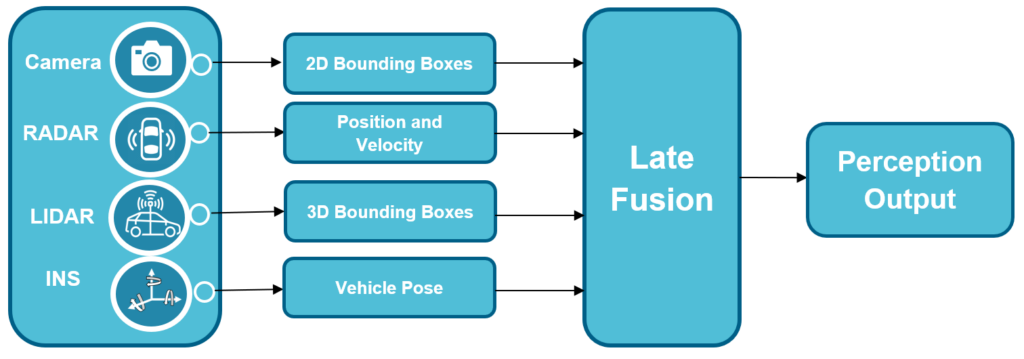
Using multiple sensor fusion paradigms, the Simcenter Engineering Services team enables customers to define and develop the optimal strategy to enhance the performance of robust perception algorithms.
ADAS testing and homologation

Once the simulation stage is complete, Simcenter Engineering Services supports the testing and homologation stage. Combining a dedicated ADAS test team, state-of-the-art test equipment, and certified test tracks in the Netherlands, our team tests the trucks and their ADAS systems according to the protocol defined by Euro NCAP. Much of our ADAS test team is involved in working groups in Euro NCAP, which gives our customers the most up-to-date knowledge about the latest regulations and testing requirements.
Using model-based systems engineering to develop a comprehensive digital twin of ADAS features
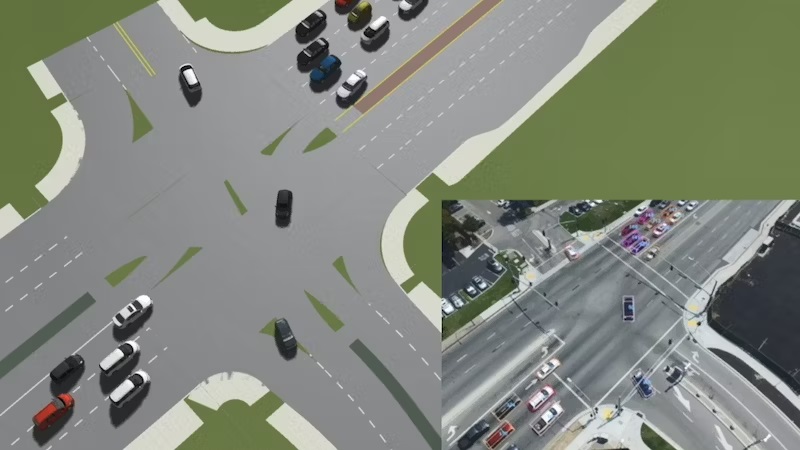
FIH Mobile, a subsidiary of Foxconn, recently decided to extend its electronics expertise to the ADAS and AV markets. In 2021, FIH Mobile partnered with Stellantis to develop the joint venture MobileDrive. Aiming to rapidly deliver high-quality software to meet market demands, MobileDrive selected Simcenter Engineering Services to assist in developing a model-based systems engineering (MBSE) approach to support its ADAS vision.
MobileDrive’s primary interest was to learn how to use a model-based framework to develop the algorithms and software controls for lateral ADAS applications, such as Lane Keep Assist (LKA), Lane Following Control (LFC), and Emergency Steer Assist (ESA). They selected Simcenter Engineering Services to act as a technology partner to develop those capabilities and provide their engineering staff with the required software expertise.
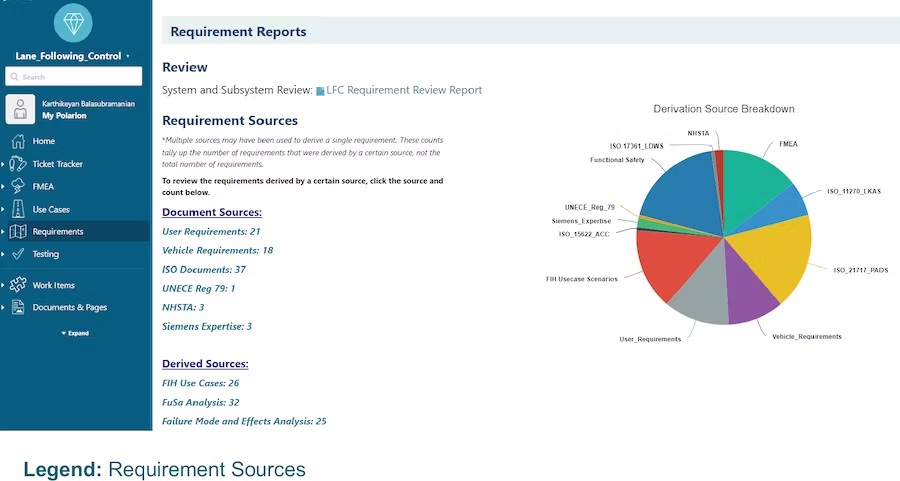
Simcenter Engineering Services provided a complete methodology and roadmap for MobileDrive’s ADAS vision, including writing the functional and technical safety requirements, performing virtual functional safety tests, generating the test cases, and developing and testing the system based on simulation models using Simcenter Amesim and Simcenter Prescan software. Additionally, they provided full requirements traceability using Polarion. Finally, the Simcenter Engineering Services team conducted a full technology transfer using Polarion to ensure MobileDrive could replicate the methodology in-house.
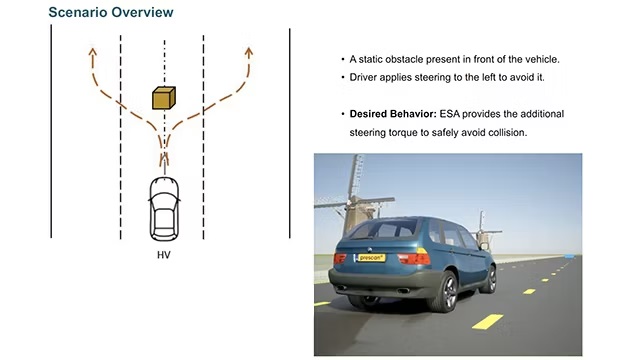
“Simcenter Engineering Services provided us with industry best practices for developing and using MBSE throughout the V-diagram,” says Burt Chen, project manager at MobileDrive. “We now have a full understanding of how to accelerate our algorithm and verification activities for product development. Using Polarion also showed us how we can be more compliant and structured in order to meet functional safety standards.”
Ultimately, MobileDrive achieved a reduced product development timeline before a physical prototype was even built.
“Thanks to our partnership with Simcenter Engineering Services, we anticipate that we will be able to bring our ECUs to market in a much more streamlined, efficient manner,” confirms Winston Hsu, CTO at MobileDrive.
While the focus of this blog post is Euro NCAP, we anticipate that many regions around the world will begin to formalize their ADAS technology requirements and ratings. Whether you are looking to meet the upcoming requirements or exceed them, Simcenter Engineering Services is a trusted engineering partner at every step of the development journey and can help you build a strategy to meet your company’s goals.

